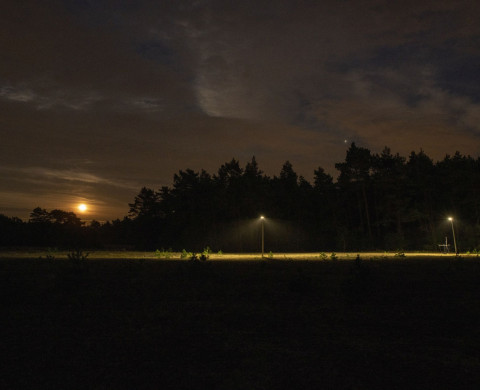Artificial light

What are the effects of nocturnal illumination on daily and seasonal timing of activity and how does this affect populations?
Research
Nocturnal illumination leads to a permanent disturbance of natural habitats and there is accumulating evidence for – often negative – impact of artificial light in an increasing number of species. However, most studies are correlative and only include immediate or short-term effects of artificial light at the level of the individual while long-term consequences are still largely unknown.
In our group we study:
• long-term consequences of presence of bird and mammal species at experimentally illuminated study sites;
• temporal changes in activity by exposure to artificial light; both in daily activity patterns and in seasonal timing of life-history stages
• how behavioural changes relate to changes in population health
We have set up 8 study sites in the Netherlands; at these sites we experimentally illuminate natural habitat. We test effects on species and species groups of exposure to three different light spectra. For more information about this project, named ‘LichtOpNatuur’, please see www.lichtopnatuur.org.
Scientific approaches and keywords
• Light pollution, light exposure, constant light, LL
• Experimental illumination of natural habitat
• Daily and seasonal timing of activity, phenology
• Fitness consequences of aberrant daily and seasonal timing
• Temporal analysis
Experts
-

-
Sander Buddendorf
PhD Candidate , Animal Ecology
-
Gabriel Charvalakis
PhD Candidate , Animal Ecology
-
Claire Hermans
Postdoc , Animal Ecology
-
Marcel E. Visser
Head of department , Animal Ecology
